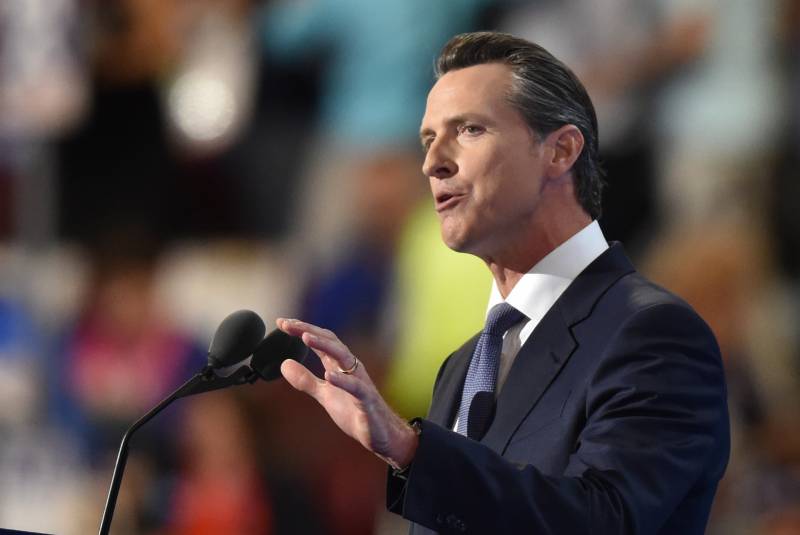The budget item would have boosted benefits to between 70% and 90% of a person’s wages, offering the higher rate to employees making under $57,000 per year. The plan could still be implemented as part of trailer bills, according to legislative staffers.
An alternative path for the proposal to reach the governor’s desk is a bill that would raise the programs’ wage replacement rates starting in 2025. SB 951, by State Sen. Maria Elena Durazo (D-Los Angeles), is advancing in the Legislature.
Without any budgetary or legislative action, hundreds of thousands of Californians each year are set to see their disability and family leave payments shrink to just 55% of their wages in 2023, due to the sunset of a bill that raised the rates to current levels. That will make the critical benefits even less affordable for lower-income workers, according to Kristin Schumacher, a policy analyst with the California Budget and Policy Center, a nonpartisan research nonprofit.
“Gov. Newsom has pitched himself as a champion of paid family leave, but he has ignored the largest barrier California workers face in taking time off — the benefit levels,” said Schumacher. “Newsom could still opt to do the right thing and increase the payment rates for paid family leave and the disability insurance program.”
Most California workers pay for these programs through a mandatory SDI payroll tax of 1.1%. The state uses those funds to provide workers partial wage replacement, which aims to ensure the SDI fund stays solvent. Workers are eligible to receive a maximum of 52 weeks for disability insurance and up to eight weeks for paid family leave.
The SDI fund, which also pays family leave benefits, is forecasted to pay a total of $10.6 billion in claims by the end of the year while maintaining a healthy balance of $2.4 billion, according to the most recent estimates by the Employment Development Department, which manages the programs.
Lower-income employees, who are disproportionately women and people of color, are much less likely to take advantage of the critical benefits even though they are taxed for them, state data shows. Paid family leave is linked to lower infant care costs for parents and better health for babies and mothers.
“We know that it’s not humane or cost-efficient to force back to work new parents, folks who are sick or injured, or their family caregivers before they’re ready,” said Katie Wutchiett, a staff attorney with Legal Aid at Work. “But by having a state disability insurance and paid family leave system that doesn’t provide enough income for families to live on, that’s exactly what we’re doing.”
Californians with less than $20,000 in annual wages represented 37% of the workers who paid into the fund in 2020, but only 14% of those who used paid family leave, according to a California Budget and Policy Center analysis.
The governor’s office declined to comment on the budget proposal or any negotiations. Last year, Newsom vetoed a bill that would have raised benefit payment rates, arguing it was too costly.
This year, however, Durazo and other lawmakers offered a potential fix to raise more funds: eliminating a ceiling for taxable contributions that allows higher-income earners to stop paying the SDI tax on wages beyond $146,000. Under the new proposal, all eligible workers would keep paying the tax throughout the year, no matter how much they make.
An analysis by the Legislative Analyst’s Office estimates the change would likely offset new costs from higher wage replacement levels, although it’s uncertain how many more people would seek the benefits.
“Right now, low-wage workers are essentially financing the leaves of more highly paid workers,” Wutchiett said. “Requiring wealthy people to pay the same percentage as the lowest-income workers seems pretty reasonable.”
It’s unclear whether Newsom agrees.
In May, Newsom offered to extend for a year the current benefit rates of 70% for very-low-income, part-time workers making under $27,000 annually, and 60% for all other employees. But that extension, which advocates like Wutchiett argue is insufficient, also was not included in the recent budget agreement with lawmakers.
Meanwhile, the consequences of not taking needed time off can be deadly, said Dr. Sharad Jain, a primary care doctor at the Sacramento County Health Center, which serves mostly lower-income patients.
Jain remembers a Latino man, a construction worker in his 50s, who should have applied for disability insurance to make the time for a lung biopsy, a CAT scan and treatment, but the patient was deterred because he believed the wage replacement rate was too low.
“When he spoke with our social worker, he said, ‘I have to go to work. Because if I don’t make my full salary, I’m not going to be able to support my family,’” Jain, a professor at the UC Davis School of Medicine, recalled.
That patient ended up receiving a cancer diagnosis too late, and he died prematurely, according to Jain, leaving his children and family without his support. That’s why Jain supports an increase in disability benefit payments, particularly for lower-wage workers.
“I think that would do a huge amount to provide them with the freedom to make decisions that would optimize their health,” he said. “And for me, as a provider, I would love to see that happen because I think that would lead to a healthier community and ultimately lower cost to the system by early diagnosis and treatment.”


